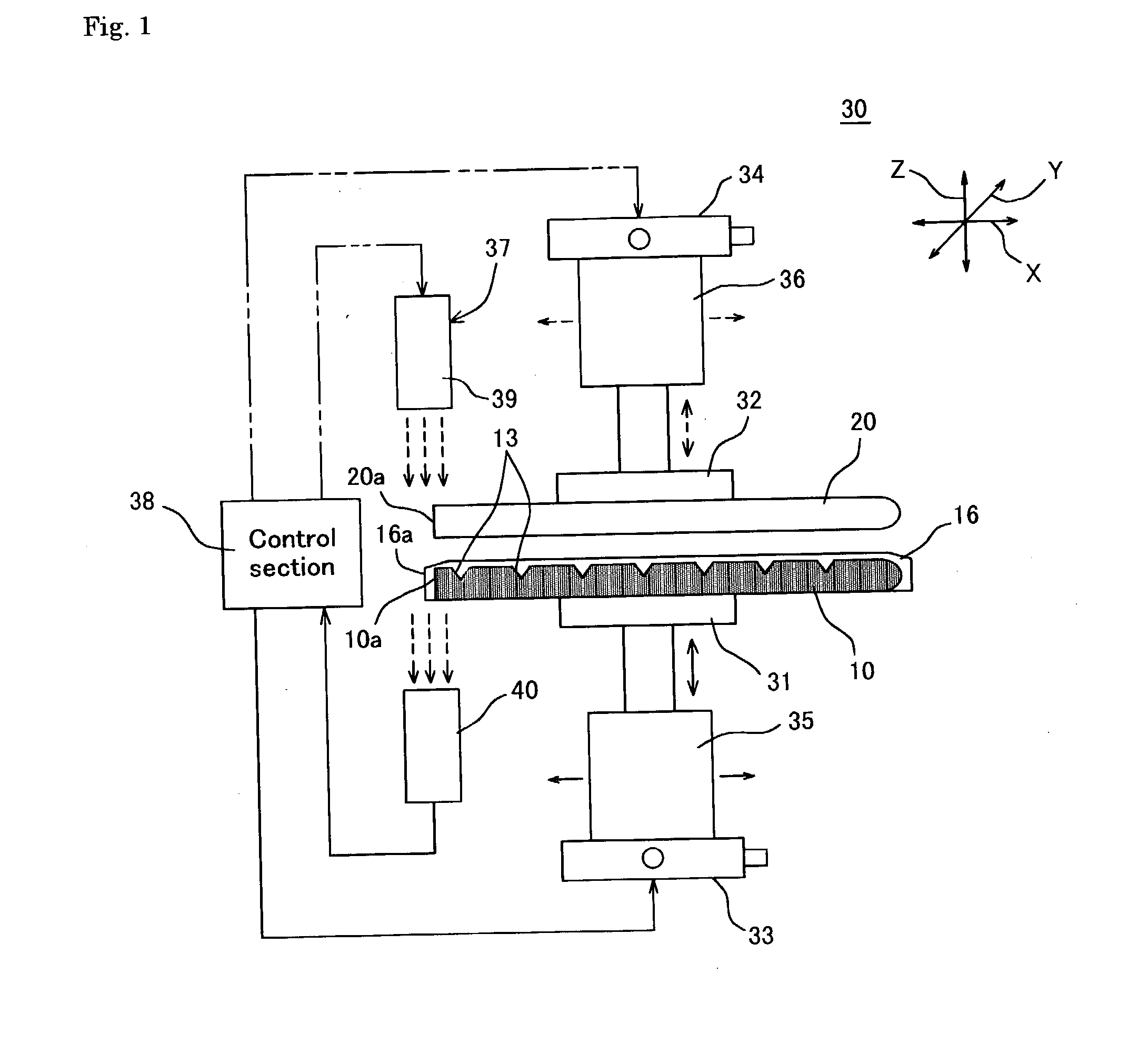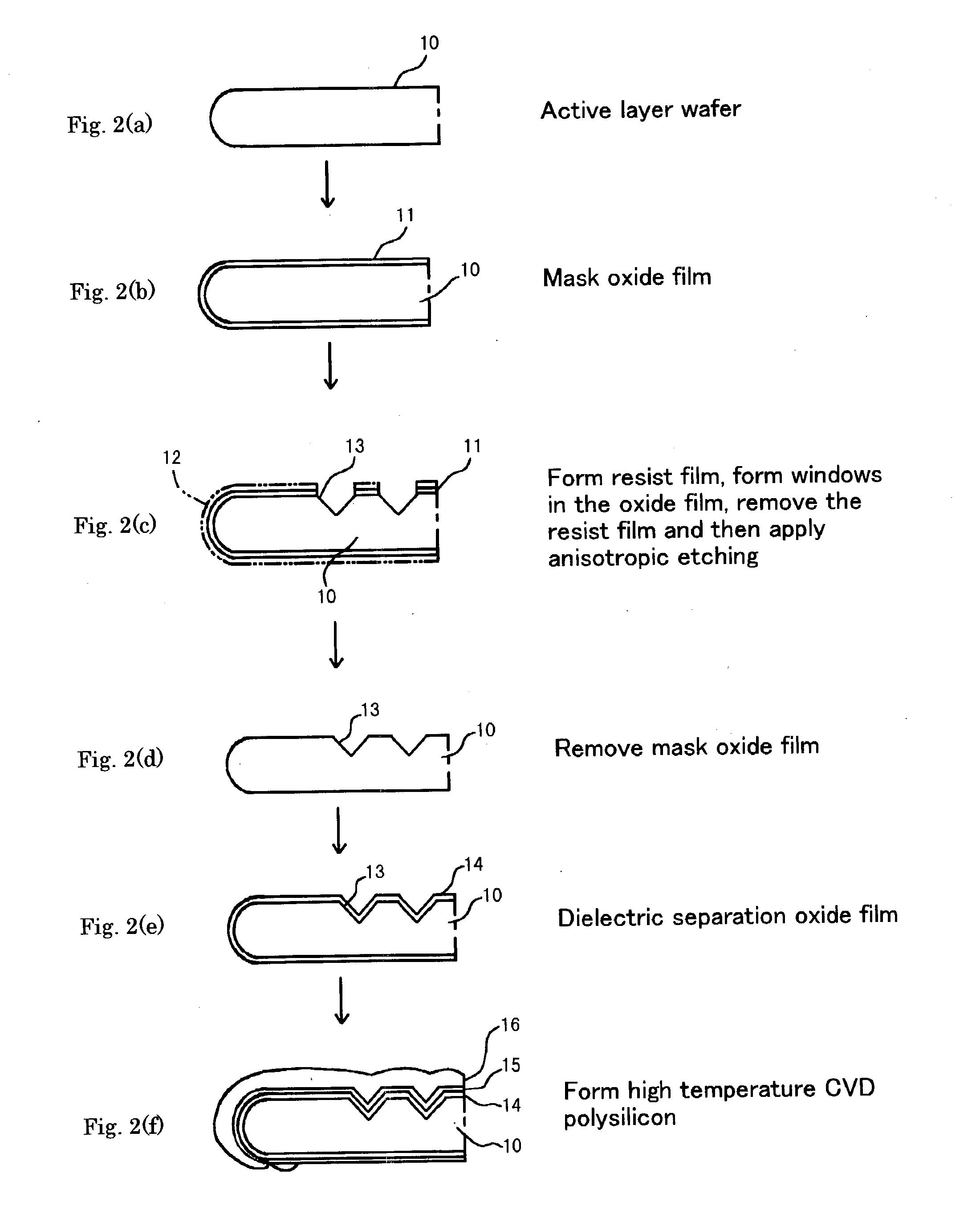Method and apparatus for producing bonded dielectric separation wafer
a technology of dielectric separation and bonded wafers, applied in electrical equipment, basic electric elements, semiconductor devices, etc., can solve the problems of silicon wafers being prone to breakage, unable to completely remove the process, and unable to bond the supporting substra
- Summary
- Abstract
- Description
- Claims
- Application Information
AI Technical Summary
Problems solved by technology
Method used
Image
Examples
Embodiment Construction
[0049] A method for producing a bonded dielectric separation wafer according to a preferred embodiment of the present invention will now be described. It is to be noted that the explanation in this specification is directed to the method, as an example, for producing a bonded dielectric separation wafer which has been described in connection with the prior art. Accordingly, the same reference numerals are used to designate the same components. For the convenience of the explanation, one direction within a horizontal plane is designated as an X-direction, another direction orthogonal to the X-direction within the horizontal plane as a Y-direction and another direction along a vertical plane as a Z-direction.
[0050] At first, a silicon wafer 10 with a diameter in a range of 4 to 6 inches having a mirror polished surface is fabricated and prepared, which will be formed into an active layer wafer (FIG. 2(a)). A surface orientation should be (100). An orientation flat "OF" (a main flat) h...
PUM
 Login to View More
Login to View More Abstract
Description
Claims
Application Information
 Login to View More
Login to View More - R&D
- Intellectual Property
- Life Sciences
- Materials
- Tech Scout
- Unparalleled Data Quality
- Higher Quality Content
- 60% Fewer Hallucinations
Browse by: Latest US Patents, China's latest patents, Technical Efficacy Thesaurus, Application Domain, Technology Topic, Popular Technical Reports.
© 2025 PatSnap. All rights reserved.Legal|Privacy policy|Modern Slavery Act Transparency Statement|Sitemap|About US| Contact US: help@patsnap.com



